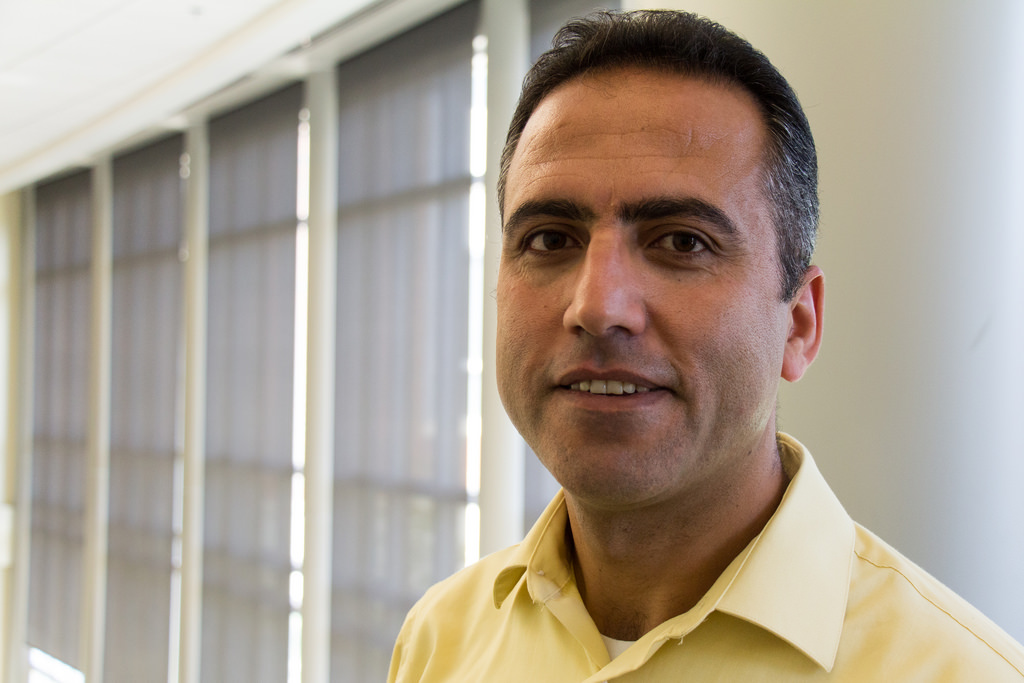 March Faculty Spotlight: Dr. Jamil Saad, PhD
March Faculty Spotlight: Dr. Jamil Saad, PhD
By: Stefan Tuomanen
We are delighted to feature Dr. Jamil Saad. In March, we spoke with Dr. Saad about his work using Nuclear Magnetic Resonance (NMR) in projects as broad as probing the mechanisms of HIV pathogenicity as well as finding molecular determinants of apoptosis.
Dr. Saad has been a part of our department since 2007, coming to UAB after completing his Ph.D. at Emory University in 2002 and his postdoctoral training at the Howard Hughes Medical Institute lab of Michael Summers at the University of Maryland Baltimore County. A trained bioinorganic chemist, Dr. Saad now uses structural and biophysical techniques such as NMR to understand how HIV interacts with host cells. Understanding this interaction is critical to developing new and effective HIV drugs that disrupt what the virus does inside the cell. There are three main phases to the HIV replication cycle: initial entry, replication, and budding/assembly. The assembly process is the least understood and, naturally, is also the process Dr. Saad is most interested in mapping. What makes the assembly process particularly difficult to investigate is that “these actions are transient and often involve so many variables that you can’t realistically look at each mechanism individually,” Dr. Saad said. He and his team have identified a key piece of the assembly process and are making strides to replicate it. This project involves looking at how a system of around 2000 copies of a protein, called Gag, that form the structural core of HIV come together to form a lattice to mediate the recruitment of the envelope protein so that it becomes an infectious virus. These molecules have to come together all at the same time, which with 2000 moving parts, makes for a very complex molecular machine to reproduce in vitro. Dr. Saad is using his NMR and structural biology expertise to solve this basic problem in virology and believes a successful in vitro model is only a couple of years away.
Dr. Saad also works closely with UAB’s Comprehensive Cancer Center on a project investigating Fas-mediated apoptosis and its role in carcinogenesis. Since cancer cells have lost their ability to undergo apoptosis, understanding how this happens could suggest how to prevent such a loss in the first place. Dr. Saad provides the structural biological expertise in order to investigate how a number of apoptosis pathways interact at the molecular level to trigger cell death and, when knocked out, how this leads to cancer. According to Dr. Saad, the biggest question that needs answering on this frontier is to see if he can help develop small molecule inhibitors that stimulate the apoptosis pathway by blocking interactions that tend to inhibit apoptosis. His line of thinking is that if we can learn how the apoptosis pathway is deactivated, then not only would we gain insight into a common type of carcinogenesis, but more importantly we could potentially re-introduce normal cell death into cancer cells.
Dr. Saad is also a committed mentor and educator who is passionate about the development of incoming and upcoming researchers. He spoke very fondly of what he saw in UAB when he was beginning his career, saying it offered an “environment any would seek to have an exciting start to their career… [I] saw so much interdisciplinary collaboration.” He believes UAB microbiology is just as strong in that front today. As a mentor, Dr. Saad champions a comprehensive scientific approach: focusing on reading important literature, analyzing data, designing experiments, and communicating findings.